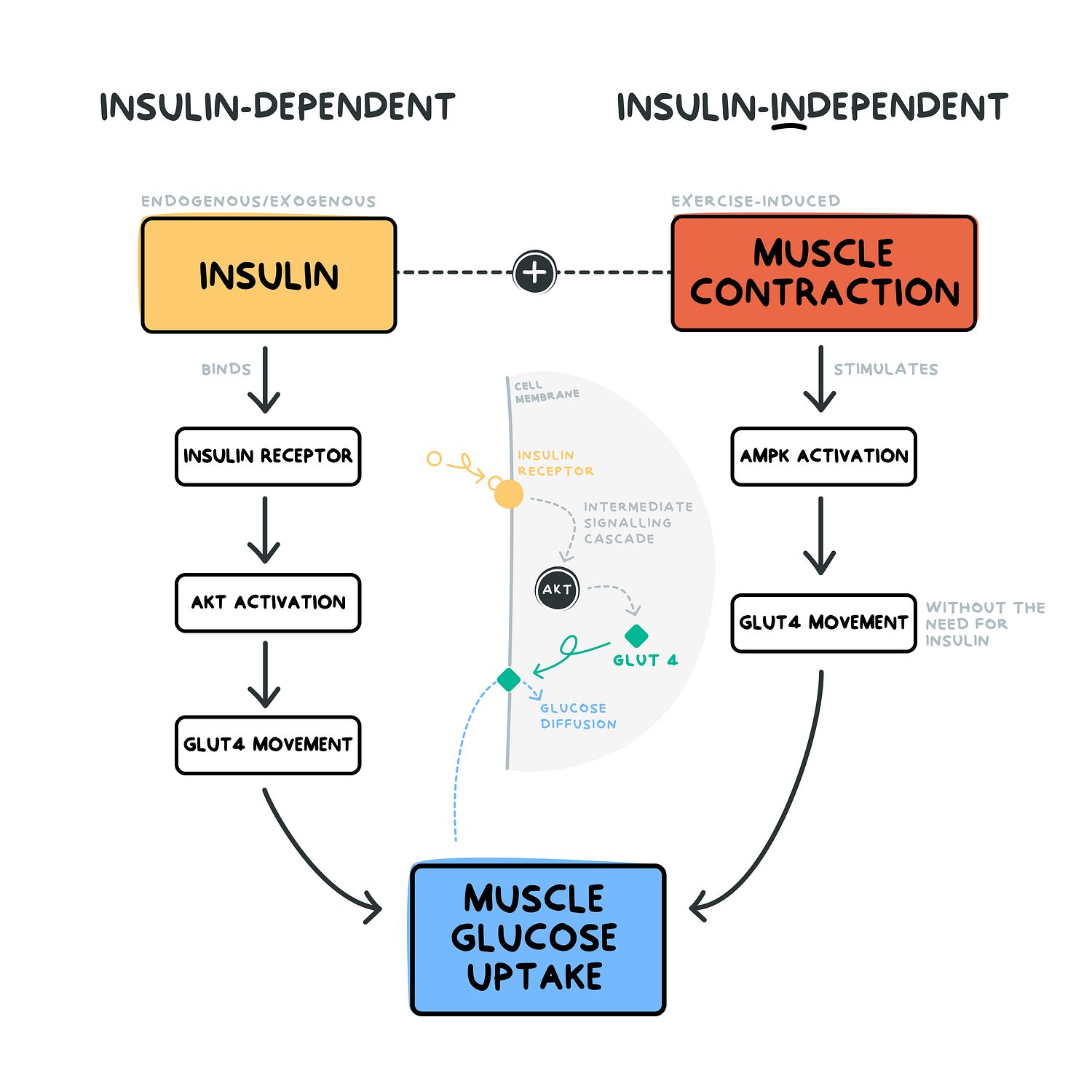
Figure 1. Two Paths to Muscle Glucose Uptake: A Simplified Representation of Glucose Uptake Pathways in Skeletal Muscle. This diagram shows how glucose enters the skeletal muscles through the insulin-dependent and insulin-independent (i.e., exercise-induced) pathways. These pathways work together to ensure efficient glucose uptake under different physiological conditions. Insulin binds to its receptor on the muscle cell membrane in the insulin-dependent pathway. This activates the insulin receptor substrate and phosphatidylinositol 3-kinase (PI3K) signalling cascade. Activation of Akt leads to the movement of glucose transporter protein (GLUT) 4 to the cell surface. GLUT4 facilitates the diffusion of glucose into the muscle cell. In the insulin-independent pathway (exercise-stimulated), muscle contractions activate AMP-activated protein kinase (AMPK) during exercise. AMPK stimulates the movement of GLUT4 to the cell surface independently of insulin, resulting in enhanced glucose uptake into the muscle cells 43.